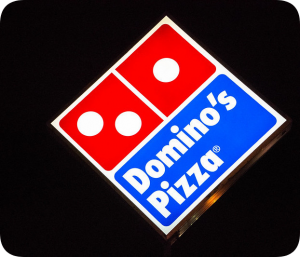 More than 15,000 restaurants have closed permanently since the start of the pandemic, and not all of them are small independent operations. NPC international, a major franchisee of Pizza Hut and Wendy’s locations, recently filed for bankruptcy protection as sales across all stores dropped 37 percent compared to the previous year. But while much of the restaurant industry has struggled, one chain has managed to thrive: Domino’s Pizza sales have increased by 16 percent since March.
More than 15,000 restaurants have closed permanently since the start of the pandemic, and not all of them are small independent operations. NPC international, a major franchisee of Pizza Hut and Wendy’s locations, recently filed for bankruptcy protection as sales across all stores dropped 37 percent compared to the previous year. But while much of the restaurant industry has struggled, one chain has managed to thrive: Domino’s Pizza sales have increased by 16 percent since March.
By focusing on delivery rather than dining in before the pandemic, Domino’s was already in a unique position to benefit from people staying in their homes for extended periods of time. But the chain also invested plenty of money into innovative delivery and carryout methods, including contactless pickup before it became a widespread practice. What’s more, Domino’s uses the same point-of-sale system across its more than 6,000 U.S. locations, making it easier for the company to develop and improve its online ordering procedures.
“All that work of the past decade has got us to a pretty good place for using technology to pivot to a new function on the fly,” said Domino’s CIO Dennis Maloney. Along with its more advanced innovations, the chain also added improvements like the decidedly low-tech “pizza pedestal,” a small cardboard platform that allows drivers to set pies safely on a customer’s front step. Small touches like these can be important to customers during the uncertainty of the pandemic, although Domino’s expects that it will return to customer interaction one day. “There’s something to the actual experience of a pizza handoff that is a personal connection,” said Maloney. “That will probably come back.”
Questions:
- How has Domino’s managed to thrive during the pandemic while many other restaurants struggle?
- Do you think more companies should follow the lead of Domino’s and develop their own innovative delivery methods? Why or why not?
Source: Greg Ip and Angus Loten, “Most Businesses Were Unprepared for Covid-19. Domino’s Delivered,” The Wall Street Journal, September 4, 2020. Photo by Mr. Blue MauMau.
